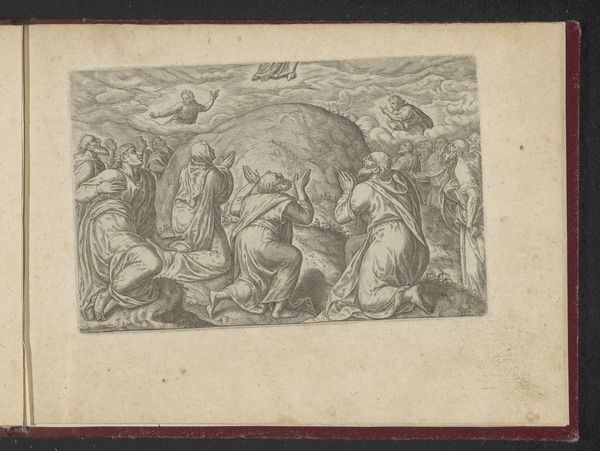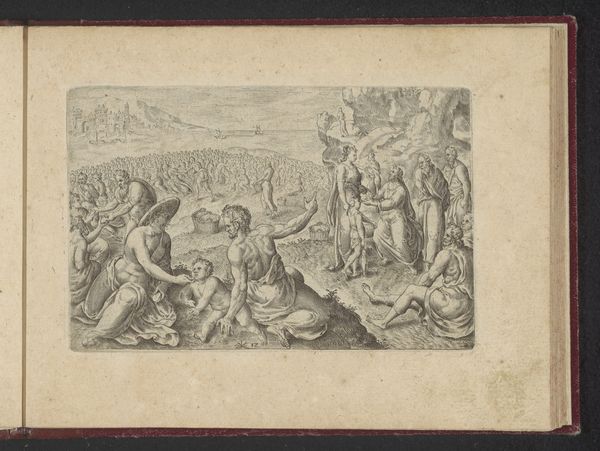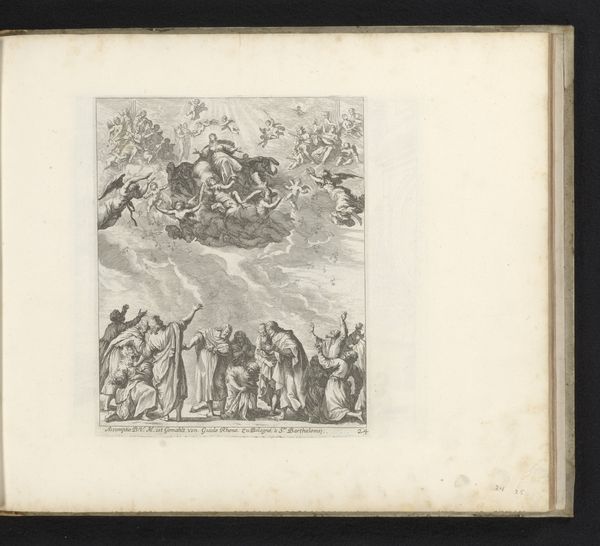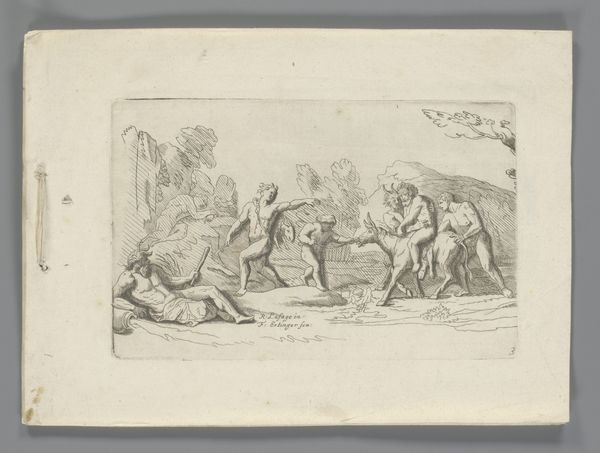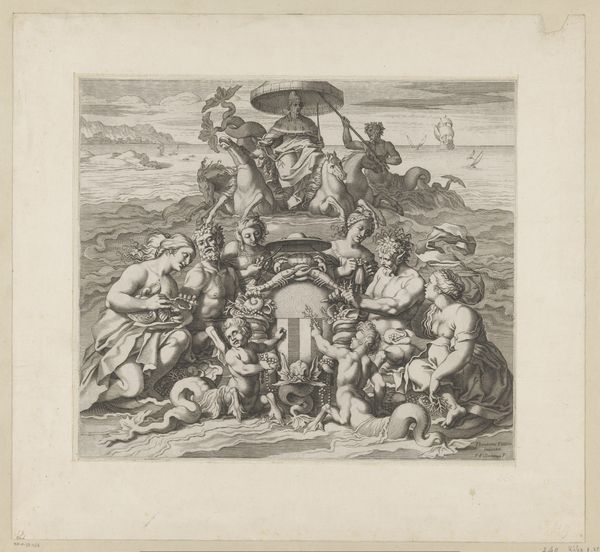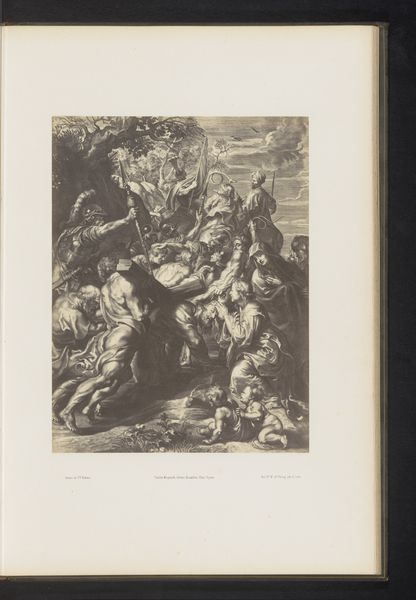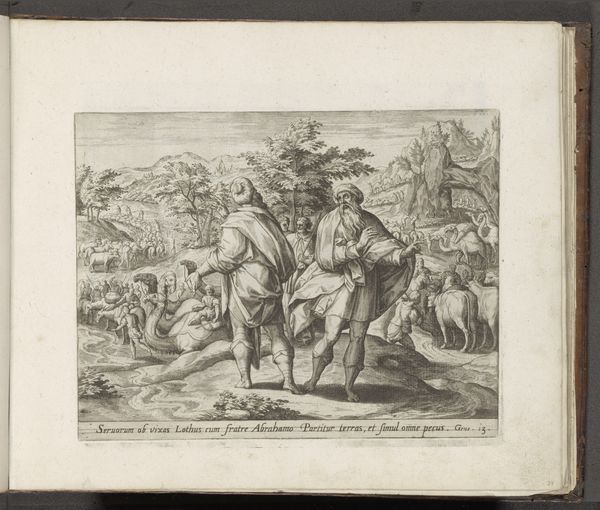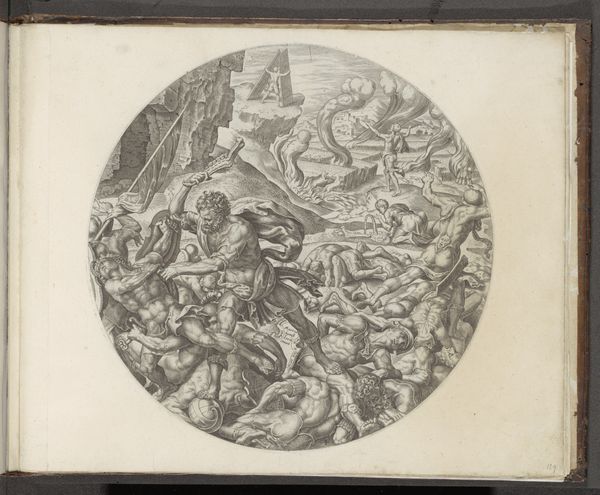
print, etching
#
baroque
# print
#
etching
#
landscape
#
figuration
#
history-painting
Dimensions: height 280 mm, width 270 mm
Copyright: Rijks Museum: Open Domain
Jan van Ossenbeeck created this small engraving, "Apollo en Diana doden de kinderen van Niobe," sometime in the 17th century. Ossenbeeck, a Dutch Golden Age painter, demonstrates the influence of classicism through the depiction of this dramatic scene pulled from Greek mythology. Here, Apollo and Diana are perched in the clouds, arrows drawn, enacting vengeance on Niobe and her children. Niobe, Queen of Thebes, had boasted of her fertility, daring to compare herself to Leto, the mother of the gods. To avenge their mother's honor, Apollo and Diana slaughtered Niobe's fourteen children. Ossenbeeck leans into the drama, capturing a frenzied scene of death and despair. Bodies litter the ground, contorted in their final moments as their mother looks on. The story of Niobe is a cautionary tale about hubris, a warning against excessive pride. What does it mean to depict a woman being punished for claiming ownership of her body? What larger cultural anxieties might it reflect? The visual drama, the horror of its subject, speaks to questions of power, gender, and punishment.
Comments
No comments
Be the first to comment and join the conversation on the ultimate creative platform.

